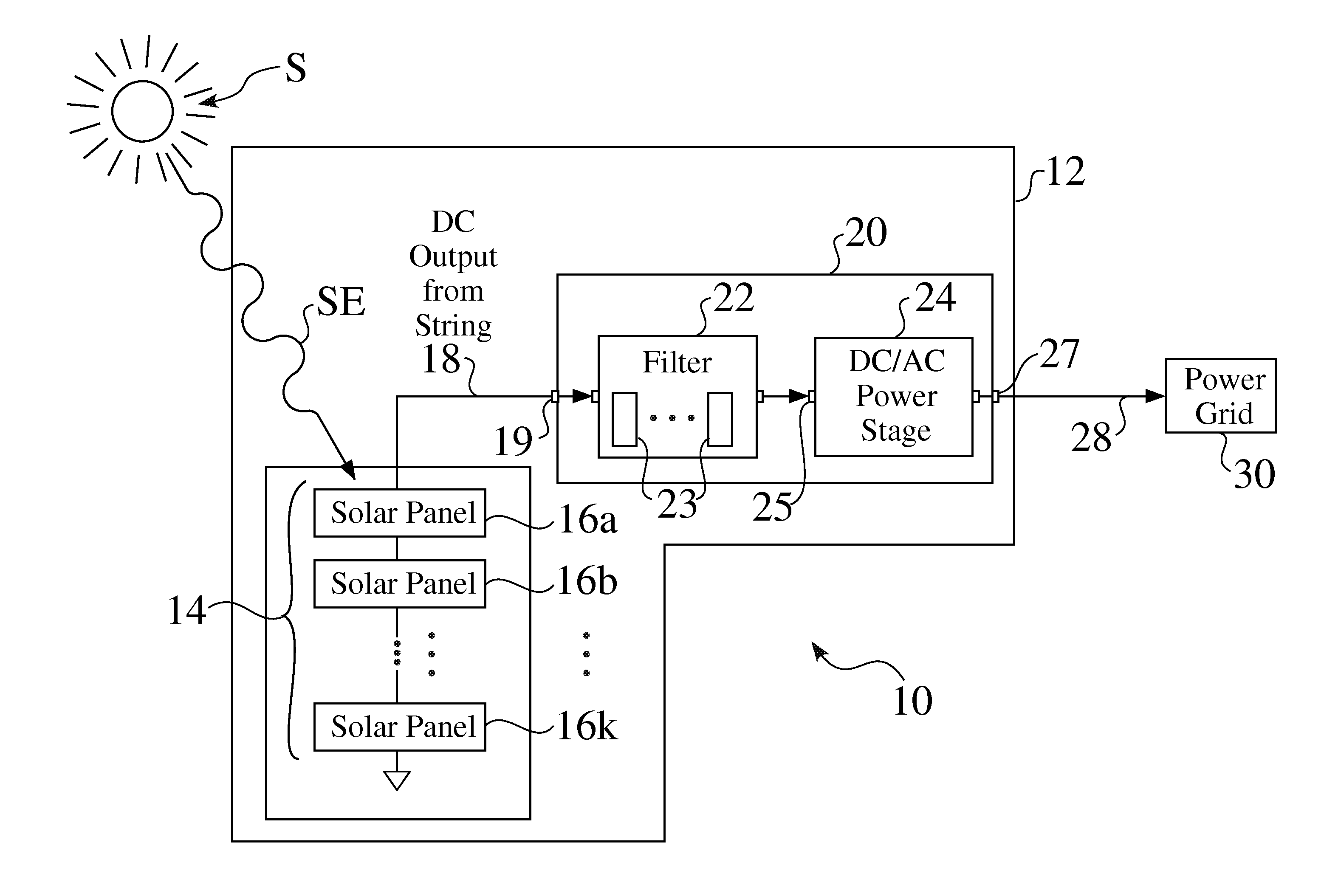Low filter capacitance power systems, structures, and processes for solar plants
- Summary
- Abstract
- Description
- Claims
- Application Information
AI Technical Summary
Benefits of technology
Problems solved by technology
Method used
Image
Examples
Embodiment Construction
[0032]FIG. 1 is a schematic diagram 10 of an exemplary conventional solar power system 12, which converts solar energy SE from the sun S into electricity 28, and supplies it to an electrical grid 30. Solar panels 16, e.g. 16a-16k, convert light SE into direct current (DC) voltage 18, wherein power is supplied to an inverter module 20.
[0033]The inverter module 20 converts input DC voltage 18 into output AC voltage 28, such as to supply power to a utility power grid 30. During daytime, each solar panel 16 produces energy that is typically delivered to the utility company, via the inverter module 20. During nighttime, i.e. under no light or low light conditions, the power plant 12 is idle.
[0034]The DC voltage output level of each panel 16 depends on the panel type and its manufacturer, and can typically be between 20V and 120V. The output voltage from a single panel 16 is insufficient for powering a conventional inverter module 20, which commonly requires DC input 18 to be in the range...
PUM
 Login to View More
Login to View More Abstract
Description
Claims
Application Information
 Login to View More
Login to View More - R&D
- Intellectual Property
- Life Sciences
- Materials
- Tech Scout
- Unparalleled Data Quality
- Higher Quality Content
- 60% Fewer Hallucinations
Browse by: Latest US Patents, China's latest patents, Technical Efficacy Thesaurus, Application Domain, Technology Topic, Popular Technical Reports.
© 2025 PatSnap. All rights reserved.Legal|Privacy policy|Modern Slavery Act Transparency Statement|Sitemap|About US| Contact US: help@patsnap.com



